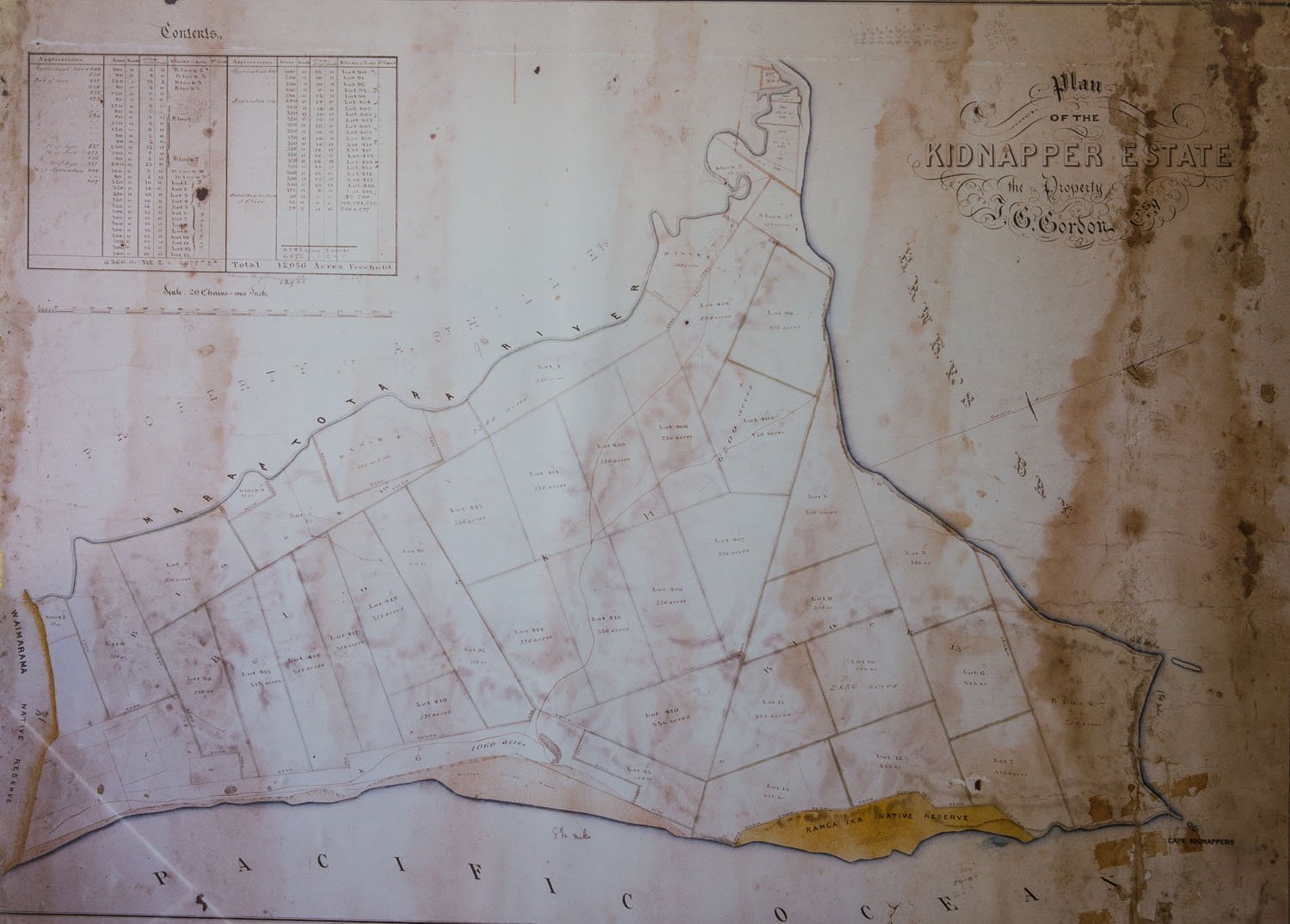
History
Clifton Station est. 1861
Enterprising Scotsman and Clifton Station pioneer James Gillespie Gordon was determined to create a new life away from the disappointments of losing his wife and much of his wealth in the Calcutta bank crash of 1857, after the Indian Mutiny.
With no farming experience, but eager to try his hand on some of Hawke’s Bay’s toughest terrain James found himself at Cape Kidnappers in 1861 with his two sons having leased and purchased an initial 1100 acres (554ha) from Joseph Rhodes.
A year after his first land acquisition at what is now known as Clifton James expanded his holdings with an adjoining 6500 acres (2630ha) from the Crown, then added more from Joseph Rhodes and others until the family had a station of 13,500 acres (5261ha), including Cape Kidnappers itself.
Opting for the name Clifton after the popular English beach resort near Karachi, and the name of the school he had attended in England. James had bought with him the pre-fabricated components of his future homestead, handcrafted Indian teak furniture, a large cast iron bath and a team of Indian army mules (via Arabia).
It was soon realised that Clifton was not going to be easy to farm; the Maraetotara River along the inland boundary provided fresh water but the Mediterranean climate meant the area was prone to drought. Bracken covered hills could be burned off and replaced with native and introduced grasses for pastures.
But with perseverance and assistance from local shepherds by 1876 there were 15,946 sheep on Clifton. Cattle farming started in 1878 with Shorthorns introduced at Clifton and by 1900 there were 17,436 sheep on the property – Clifton Station quickly became an iconic New Zealand working farm.
“Clifton was never going to be easy to farm; the Maraetotara River along the inland boundary provided fresh water but the Mediterranean climate meant the area was prone to drought”
- The Hidden Heritage of the Cape Coast

The original Clifton Homestead. It was prefabricated in India using teak and shingles. It was brought to New Zealand by James Gordon in 1861. All the parts of the building were floated ashore at the site of the present homestead using Indian Army mules. It burned down in 1899.

Frank Gordon, James’ grandson, who ran Clifton for his family in England, for 50 years.

The 6 children (including Angus) of John and Barbara Gordon outside the present homestead in the early 1960’s.

James Gillespie Gordon, who bought the original 13,500 acres of Clifton in 1861.

The blade shearing gang outside the Clifton woolshed in 1893. Frank Gordon is seated in the front with a boater hat on.

Captain Thomas Edward Gordon, James’ son.

The original homestead.

The map of the original property.

The Gordon coat of arms. James Gordon was the first settler in New Zealand to be granted one.

The Clifton County Cricket Club in 1985. (Angus in brown hat second on the left.)

To read more on the story of how Clifton came to be what it is today:
History sources:
- Jenny Carlyon & Diana Morrow, Cape Country, Random House- Penguin, New Zealand, 2016, pp. 51-53; 66, 68-70
- In the Shadow of the Cape, Angus Gordon
- Early Stations of Hawke’s Bay, Miriam Macgregor, Reed, Wellington, 1970, p36-38
- Keith Newman, Beyond Betrayal (Penguin 2013), pp 113-115
Photographs: Courtesy Angus and Dinah Gordon
Featured
In the Shadow of the Cape
The story of Clifton is a story of a family's deep love and connection to that land and their determination to hand it on intact and thriving to succeeding generations. Six generations of Gordons have enjoyed living there, and the seventh has just been born. Each generation has had a deep attachment to this land both through times of prosperity and success, and through struggles, droughts, floods, and economic downturns. Each has successfully maintained and improved the property to hand onto the next generation.


